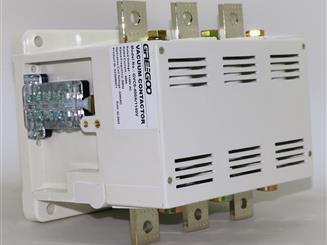What is the difference between the magnetic latching type and electrical holding type vacuum contactor?
Vacuum contactors are electrical devices used for controlling electric circuits in various applications, such as motor control, lighting, and power distribution. They are designed to make and break electrical connections in a reliable and efficient manner. Vacuum contactors can be classified into two main types based on their mechanism for holding the contacts closed: magnetic latching type and electrical holding type. Here's an overview of the key differences between these two types:
1. Operating Principle:
- Magnetic Latching Type: In a magnetic latching vacuum contactor, the contacts are held closed using a permanent magnet. When the contactor is energized to close the contacts, the permanent magnet locks them in the closed position. To open the contacts, a separate coil is energized to create a magnetic field that opposes the permanent magnet's field, causing the contacts to release and open.
- Electrical Holding Type: In an electrical holding vacuum contactor, the contacts are held closed by an electromagnetic coil. When the coil is energized, it creates a magnetic field that attracts the contacts together, keeping them closed. To open the contacts, the coil is de-energized, and the magnetic force is removed, allowing the contacts to separate.
2. Energy Efficiency:
- Magnetic Latching Type: Magnetic latching contactors tend to be more energy-efficient than electrical holding contactors because they only require energy during the brief periods when the contacts are being opened or closed. The permanent magnet holds the contacts in place without the need for continuous electrical power.
- Electrical Holding Type: Electrical holding contactors require a continuous supply of electrical power to maintain the contacts in the closed position. This can result in higher energy consumption, especially in applications where the contacts are closed for extended periods.
3. Noise and Heat Generation:
- Magnetic Latching Type: Magnetic latching contactors are often quieter and generate less heat compared to electrical holding contactors because they do not require continuous energization of the holding coil.
- Electrical Holding Type: Electrical holding contactors can produce more noise and heat due to the constant energization of the holding coil.
4. Response Time:
- Magnetic Latching Type: Magnetic latching contactors typically have a faster response time because they rely on the rapid reversal of magnetic fields to open and close the contacts.
- Electrical Holding Type: Electrical holding contactors may have a slightly slower response time because the coil must be energized or de-energized to operate the contacts.
5. Operating Frequency:
- Electrical holding type is higher than magnetic latching type.
The choice between magnetic latching and electrical holding vacuum contactors depends on the specific requirements of the application, including energy efficiency, noise considerations, and response time. Each type has its advantages and disadvantages, and the selection should be based on the needs of the electrical circuit or system being controlled.

The Critical Role and Application Analysis of Freewheeling Diodes in Solid-State Relay
The freewheeling diode plays a critical protective role in solid-state relays, especially when controlling inductive loads. It effectively suppresses back electromotive force, protects the power components of the solid-state relay, reduces electromagnetic interference, and enhances the stability and reliability of the circuit.
Read More
Rotating Diode vs. Standard Recovery Diode: Key Difference and Application
A rotating diode is a special type of rectifier diode used in the brushless excitation system of synchronous generators (alternators).
Read More
What are the main difference between electrical holding and magnetic holding in vacuum contactor?
In summary, the main difference between electrical holding and magnetic holding in a vacuum contactor is the method used to maintain the closed position of the main power contacts when the coil is de-energized. Electrical holding uses an external electrical circuit to provide continuous holding force, while magnetic holding relies on the energy stored in a permanent magnet to maintain the closed position without an external power supply.
Read More
Fast Recovery Diode Modules vs. Standard Recovery Diode Modules: Which One to Choose?
Fast recovery diode modules are ideal for applications that require rapid switching and high efficiency, while standard diode modules are better suited for low-frequency and DC applications
Read More













